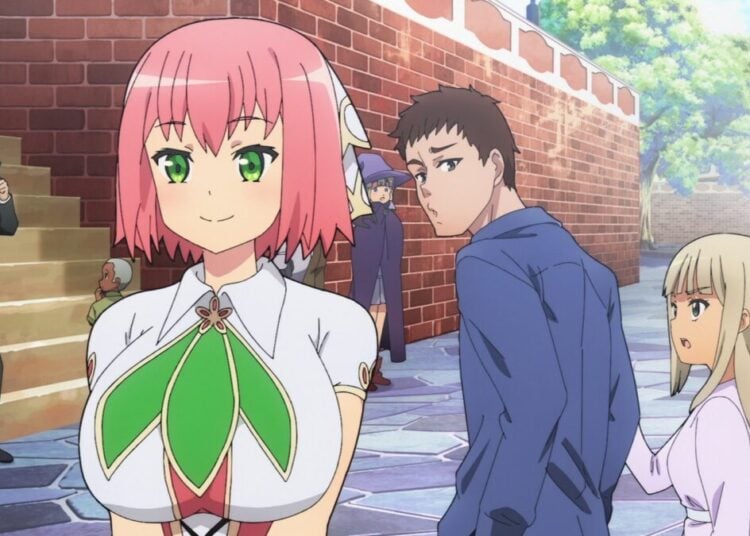As you know if you’ve ever watched Iron Chef or Takeshi’s Castle, Japanese television can be quite bizarre and interesting. Japan has a good selection of television, with five major TV networks producing dramas, variety programs, comedy, anime and other shows for their viewers. A lot of television is intended to entertain by shock value, and any kind of wacky television concept you can imagine has probably been done here — the other day I happened to see a show in which contestants had to extinguish candles by shooting water at high speed out of their tear ducts. In addition to the normal commercial TV stations, Japan is overseen by the kind, benevolent government-run NHK, short for Nippon Housou Kyoukai, in case it ever comes up in Trivial Pursuit. NHK operates a standard TV channel and an all-educational channel, as well as two BS (“broadcast satellite”) channels for people with satellite dishes — Domo-kun is the official mascot of the two satellite channels. NHK produces a variety of entertainment programs, just like the commercial stations, but they tend to focus more on culturally important shows like histories more than regular TV. Several popular anime series, including Cardcaptor Sakura and Nadia: The Secret of Blue Water were produced by NHK.
English is a difficult language to master, partially because we borrow vocabulary and phonetic rules from many other world languages. One of the most difficult areas of studying English for Japanese is pronunciation: because Japanese is a syllabic language, capable of expressing sounds like ka, ki, ku, ke and ko but never the consonant “k” by itself, Japanese have an extra difficult time of learning to produce natural English sounds. A simple word like “weekend” has to be mashed into katakana-sized chunks for Japanese to express it, producing “oo-EE-koo-EHN-doh.” There are many English sounds which aren’t present in Japanese, too, like the difference between L and R. One useful tool for learning to pronounce English naturally are minimal pairs, pairs of phonetically similar words such as light and right or fast and first, which students can study to master the pronunciation. Some Japanese still can’t get it right, though. I had a Japanese friend who was always avoiding talking about politics. The reason? She knew she couldn’t pronounce the word “election” without embarrassing herself.
In Japan, there are often concepts that are very difficult for Westerners to grasp. One measurement of beauty here is related to the number of creases in a persons eyelid when their eyes are open — one crease (“hitoe” hee-TOE-eh), two creases (“futae” fu-TAH-eh) or three (“mie” MEE-eh). Single-creasers have slender, traditionally Asian eyes, while those with more creases have larger eyes that look European to the Japanese. Getting plastic surgery to change the appearance of your eyes is quite popular among TV stars and young Japanese. I have to admit, I’d never considered that people had different numbers of creases in their eyelids until coming here — it was a totally alien concept to me. Another measure of beauty is having a “high nose” (hana ga takai), an important feature for anyone who wants to be considered one of the Beautiful People here. I never really thought of schnozzes as anything other than “big” or “small” before coming to Japan, but apparently there is more to a person’s nose than meets the eye.
J-List carries a remarkable number of great items from Japan for you, including some things you might know even existed. Once, at our favorite sushi restaurant, I noticed a unique clock on the wall: it was a sushi clock, made with pieces of wax sushi in place of the numbers, hand-crafted by professional wax food artists (a famous Japanese art form). It had chopsticks for the hour and minute hands and a toothpick for the second hand. I was totally bowled over at the detail of this cool item, and decided to hunt down the company so that I could get some of the clocks for J-List. I was successful, and we’ve got these fantastic clocks on the site now. They’ll transform any room into a special place, and they make unforgettable gifts too. To help you choose one of these amazing sushi clocks, we’ve reduced prices on all of them.
For the new update, we’ve got some excellent products from Japan for you, including great updated and restocked items in all categories, including snacks and gum, DVDs, anime and toy products, photobooks, manga and more. Remember, you can use the “three day” link to view products updated in the last three days, or else view all products with the “view all products” link on the left hand side of the screen. To view all new products, click this link: http://www.jlist.com/UPDATES/3/
A few customers reported problems checking out with the new J-List shopping cart system. It turns out that not all the accounts from the old checkout system had been imported to the new one. We’ve fixed it now so everything should be smooth sailing now!
Remember that J-List carries the famous Japanese gum Black Black, a caffeine-laced gum that will wake up you and keep you awake. Enjoyed by everyone from college students to truck drivers, Black Black has been plugged in Wired Magazine and novels by William Gibson. And as with most of our gum and snack items, if you buy 10 or more you get a 15% discount at checkout.















